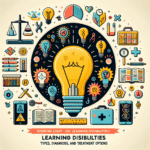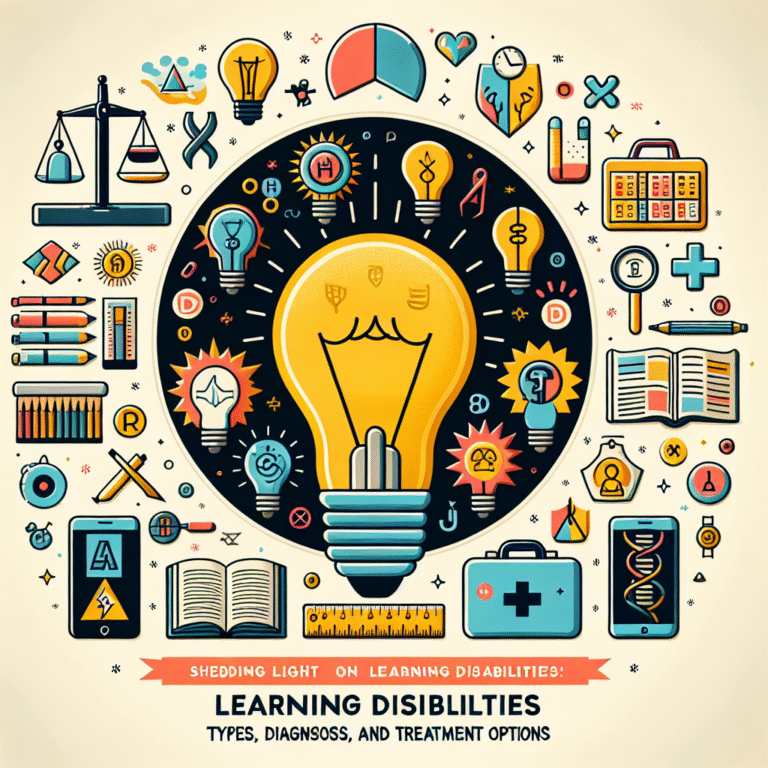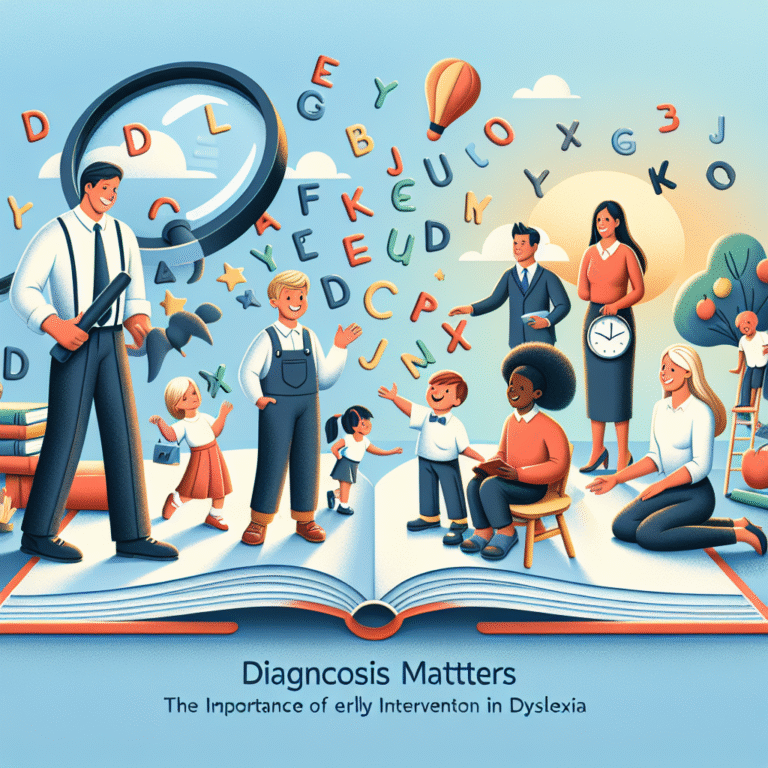
The Hidden Hurdle: Identifying Visual Processing Disorders in Academic Settings
Introduction
In the bustling world of education, where every child is expected to thrive, there’s an invisible barrier that often goes unnoticed—the challenge of visual processing disorders. This "hidden hurdle" can significantly impact a child’s learning experience but frequently remains undiagnosed in academic environments. Imagine a bright student who struggles to read, not due to a lack of intellect, but because their brain processes visual information differently. This article aims to illuminate the complex nature of visual processing disorders in academic settings, offering insights that educators, parents, and policymakers can utilize to foster a more inclusive educational landscape.
Understanding Visual Processing Disorders
Visual processing disorders (VPDs) represent a complex group of conditions affecting how the brain interprets visual information. They can manifest in various ways, from difficulties with reading and writing to challenges in spatial awareness and organization. Unlike simple vision problems, visual processing disorders require specialized understanding and intervention.
Types of Visual Processing Disorders
There are several types of visual processing disorders, including but not limited to:
- Visual Discrimination: The inability to distinguish between similar shapes, colors, or patterns.
- Visual Memory: Difficulty remembering visual information, such as where items are located or recalling details from pictures.
- Visual-Spatial Skills: Challenges in understanding how objects relate to each other in space, affecting geometry and other subjects.
- Visual-Motor Integration: Struggles with coordinating visual input with physical movements, impacting handwriting and sports.
These disorders can co-occur with other learning disabilities, making the identification process even more complicated.
The Role of Educators in Identifying VPDs
Educators serve as first responders in recognizing the signs of visual processing disorders. They are often the first to notice when a student is consistently struggling in visually intensive subjects like math and reading.
Signs to Look For
Here are key indicators educators should be vigilant about:
- Consistent Avoidance of Reading: A student may avoid reading out loud, showing signs of frustration or anxiety.
- Struggles with Writing: Poor handwriting, frequent spelling errors, or difficulty organizing written thoughts may indicate a visual-motor integration issue.
Case Study: The Struggling Student
Consider a 3rd grader named Sarah. Although Sarah excelled in verbal communication and had an extensive vocabulary, she continually fell behind in reading. Her teacher noticed Sarah frequently lost her place while reading and often confused similar-looking letters. After consultation with a specialist, Sarah was diagnosed with a visual discrimination disorder. With targeted support, her reading skills improved significantly, showcasing how early identification can pave the way for success.
Creating Supportive Learning Environments
To effectively address visual processing disorders, schools must create environments that accommodate various learning needs:
Strategies for Accommodation
- Use of Visual Aids: Incorporating color-coded materials can help differentiate tasks for students struggling with visual discrimination.
- Flexible Seating Arrangements: Allowing students to choose seating that suits their visual needs can enhance focus and concentration.
Table: Effective Teaching Strategies for VPDs
| Strategy | Description | Impact on Learning |
|---|---|---|
| Chunking Information | Breaking lessons into smaller, manageable pieces | Reduces overwhelm and improves retention |
| Multi-Sensory Teaching | Incorporating visual, auditory, and kinesthetic methods | Engages various learning styles |
| Graphical Organizers | Using charts and diagrams to represent ideas | Aids visual memory and organization |
The Importance of Early Intervention
One of the most compelling aspects of visual processing disorders is that they can often be mitigated through early intervention. Untreated, these disorders can lead to lifelong academic struggles and diminished self-esteem. The earlier children receive help, the better their chances for success.
The Diagnostic Process
Identifying VPDs typically involves a multi-faceted evaluation process:
- Parent and Teacher Observations: Gathering insights from those who interact with the child regularly.
- Standardized Testing: Conducting tests that evaluate different visual processing skills.
- Clinical Assessment: A specialist may conduct comprehensive evaluations to ensure an accurate diagnosis.
Case Study: Collaborative Success
John, a high school student, had always been told he "wasn’t trying hard enough." After years of frustration, a thorough evaluation revealed he had visual processing challenges. With tailored support and regular consultations between parents, teachers, and specialists, John not only improved his grades but also regained his confidence.
Parent Involvement: A Crucial Element
Parents play an essential role in the identification and support of children with visual processing disorders. Positive communication with schools and being informed about the signs and symptoms can lead to quicker diagnoses.
How to Support Learning at Home
- Create a Routine: Establishing consistent study habits can help with visual processing tasks.
- Engage with Learning Tools: Utilize apps or games specifically designed to strengthen visual processing skills.
FAQ: Steps to Take if You Suspect a VPD
- Document Concerns: Keep a record of observed behaviors that raise suspicion.
- Communicate with Teachers: Discuss your observations and seek their insights.
- Seek Professional Assessment: Consult an educational psychologist or optometrist specializing in visual processing disorders.
The Future of Identification in Academic Settings
As awareness of visual processing disorders grows, so does the importance of integrating identification processes into academic settings. Reform strategies must be implemented to accommodate all learners effectively.
Training for Educators
Continuous professional development courses focused on visual processing disorders should become mandatory for educators. These courses can teach teachers how to:
- Identify signs of VPDs early.
- Implement effective teaching strategies that support diverse learning needs.
Table: Training Modules for Educators
| Module | Focus Area | Expected Outcome |
|---|---|---|
| Signs and Symptoms | Identifying early indicators of VPDs | Increased awareness and early action |
| Teaching Strategies | Best practices for supporting affected students | Improved academic success for all |
| Collaboration Techniques | Building a cooperative relationship with parents and specialists | Holistic support for the child |
Conclusion
Visual processing disorders are indeed a "hidden hurdle" within academic settings, often overlooked yet significantly impactful. By enhancing awareness and understanding—among educators, parents, and specialists—we can initiate a culture of early identification and intervention. This transformative change not only fosters academic success but also nurtures self-esteem and confidence in students.
In your journey to support children facing these challenges, remember that knowledge is power. Each step taken towards awareness and understanding makes a profound difference in the educational landscape.
FAQs
Q1: How can I tell if my child may have a visual processing disorder?
A1: Look for persistent challenges in reading, writing, and spatial awareness. Consult with educators and specialists if you’re concerned.
Q2: Are visual processing disorders the same as vision problems?
A2: No, visual processing disorders involve difficulties in how the brain processes visual information, while vision problems refer to actual sight issues.
Q3: What age can visual processing disorders be diagnosed?
A3: Visual processing disorders can be diagnosed at any age, but early diagnosis is ideal for effective intervention.
Q4: Can visual processing disorders affect learning in subjects other than reading?
A4: Yes, they can impact math, spatial skills, and even social interactions due to challenges in interpreting visual cues.
Q5: How do I approach my school about my concerns?
A5: Document specific instances of difficulty, and schedule a meeting with your child’s teacher and special education staff to discuss your observations.
Q6: Are there therapies available for visual processing disorders?
A6: Yes, various therapies such as occupational therapy or vision therapy can help improve visual processing skills.
By fostering greater awareness, we empower educators and parents to recognize and support children facing these challenges, ultimately leading to more enriching educational experiences. Let’s work together towards dismantling the hidden hurdles in academic settings.









